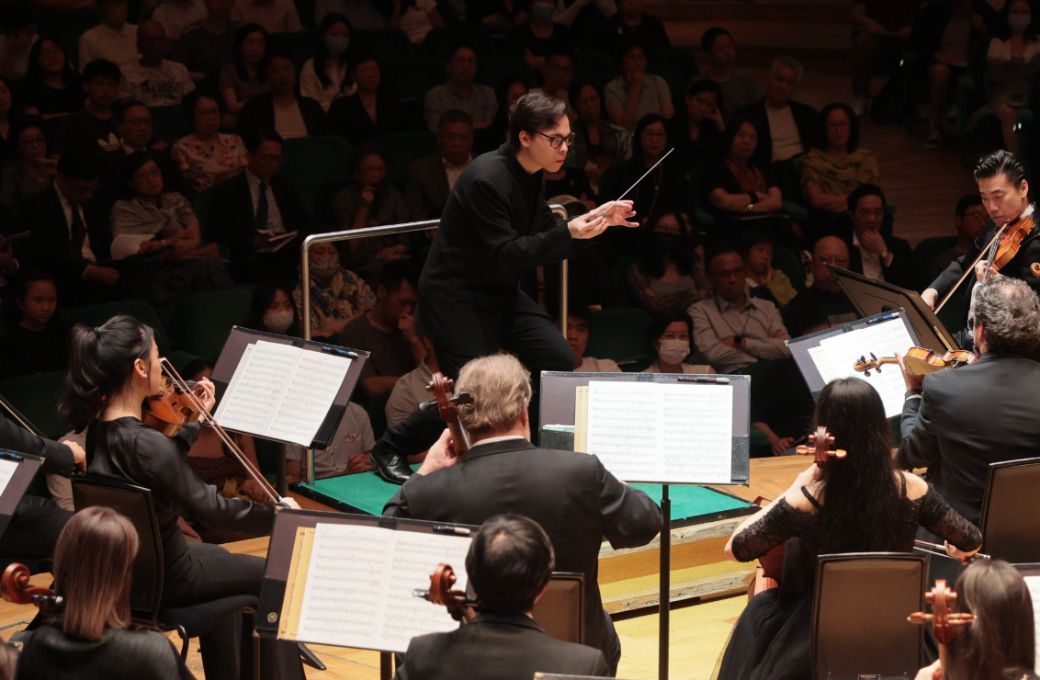It was no accident that the Hong Kong Philharmonic’s billing of two big Russian works on the weekend opened with something quintessentially Finnish. 23-year-old Filipino-Finnish conductor Tarmo Peltokoski – the latest in a steady stream of guests at the HK Phil – added Sibelius’ Finlandia to the mix, aiming to balance the Russian composers with a nod to Finland’s ending its neutral stance towards Russia. Geopolitics aside, the proof of the pudding was in the performance, and Friday’s season finale at the Concert Hall of Hong Kong’s Cultural Centre turned out to be a cracker.

Finlandia opened with tight brass snarls that emanated from Peltokoski’s lunges like snapping crocodile jaws. The unhurried expanse that was achieved by the young Finnish conductor contrasted with an exciting urgency in the string motifs, and when the germ of the main melody appeared, it was shaped in the woodwinds with nuanced sensibility. Ultimately, there was no stopping the powerful engine set in motion by tuba and timpani as it led to a rousing conclusion.
When it comes to grand and showy gestures, acclaimed Athens-born violinist Leonidas Kavakos is no subscriber... and with good reason. His solid stance and violin hold belies the abundant tonal colour that he can extract from the instrument. Kavakos delivered just that and more in Tchaikovsky's Violin Concerto in D major. The Allegro moderato, full of playful and whimsical detail, was exquisite. Every note in the frenetic passages sparkled with intention, and for its drama-packed inventiveness and technical prowess, the solo cadenza was a joy.
He continued to captivate in the slow, muted Canzonetta with sweet sonorities that often lingered like the long, sophisticated finish of a great wine. While Peltokoski and his players were mostly responsive to Kavakos’ easing of tempi, they were obviously caught off guard by the violinist’s pacy start to the finale, but the pick-ups tightened as the Russian folk-dances intensified.
Shostakovich’s predominantly bleak Symphony no.10 in E minor followed intermission, and an aptly sombre stage was soon set in the opening Moderato. Peltokoski allowed the strings space to bathe in the eeriness, lending Andrew Simon’s first clarinet solo an enhanced element of harrowing vulnerability. Peltokoski’s dexterous interjections in the compact Allegro – a quasi musical portrait of Stalin – were translated into sounds of sheer terror and explosive rage in the orchestra. The sardonic swing of the dark Allegretto dance was as fabulous as Lin Jiang’s striking and poignant horn solo that interrupted it.
Within the profound stillness achieved in the finale’s introspective introduction, Megan Sterling’s solo flute captivated as it hinted at perkiness to follow. But alas, even Benjamin Moermond’s perky bassoon chuckle had little chance of swinging the sentiment, and Peltokoski, making no bones about driving home the composer’s reoccurring musical signature (D-S-C-H), let the magnificent fury from the orchestra speak for itself.


